Horse loans: Your guide to full and part loaning a horse
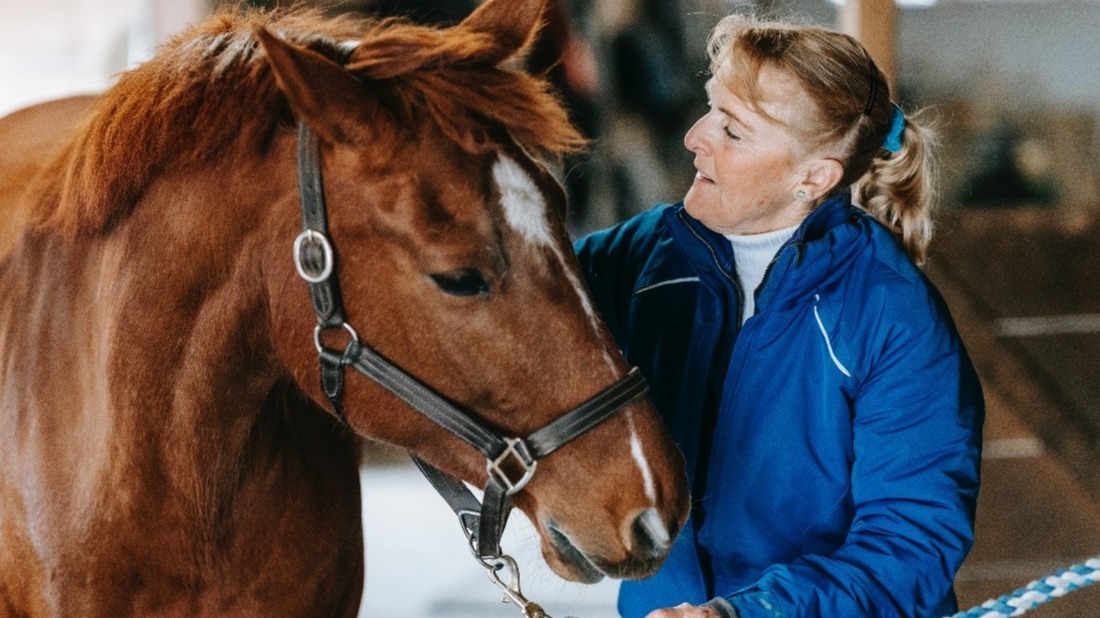
A horse loan is a great alternative to buying a horse if you’re not yet ready for the time or financial commitment of purchasing one. Equally, if you’re an owner who unfortunately can’t be around for your horse as much as you would like, loaning them out can be a great solution. While not as big of a financial commitment as buying or selling, there is still a lot to consider when loaning a horse. As it’s a contractual agreement, you’ll want to make sure you’re aware of the terms and conditions of the loan so you can be fully prepared for the whole process. That’s why we’ve put together this guide, covering all the essential information on loaning a horse or pony, including:
- What is a horse loan?
- Part loaning a horse
- Full loan horse contracts
- Loan-to-buy agreements
- What should a loan contract cover?
- Loanee: Loaning a horse
- Cost of loaning a horse
- Time commitment of a horse loan
- How to find a loan horse
- What to look for in a loan horse
- Taking out insurance
- Signing the contract as a loanee
- Owner: Loaning out your horse
- Deciding if loaning is right for your horse
- Finding someone to loan your horse
- Signing the contract as the owner
- Informing the PIO
- Maintaining contact throughout the loan
- What happens if there is a breach of agreement?
What is a horse loan?
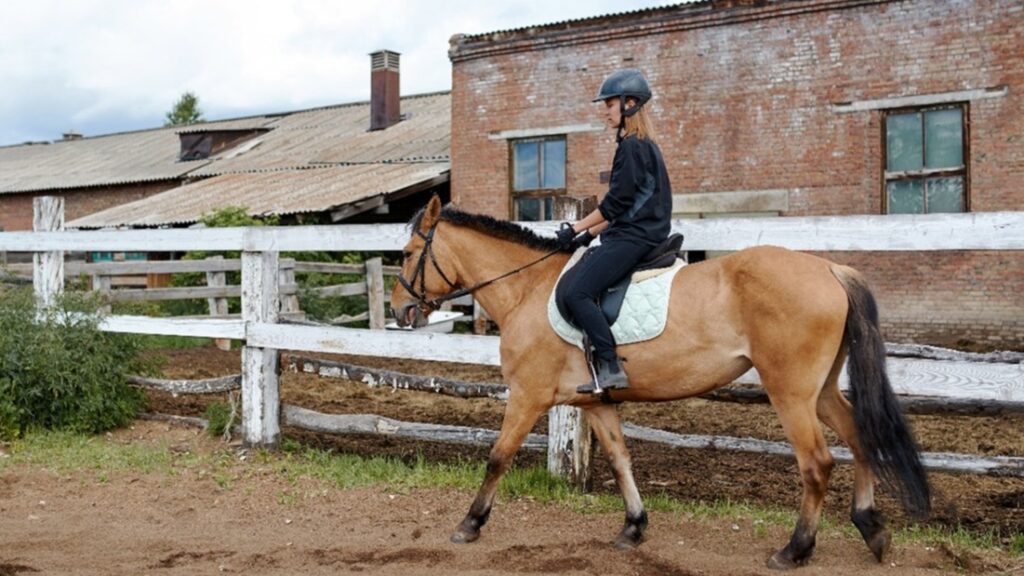
A horse loan is a temporary agreement in which a rider can borrow a horse from its owner for a certain period of time and under set conditions. It removes the initial purchase cost, but still involves many of the same responsibilities of ownership. If you’re considering buying a horse but you’re on a budget, loaning could be a great option.
Horse loaning is also beneficial for owners who aren’t yet ready to sell their horse or pony, but can’t keep up with the commitment of riding and caring for them every day. Instead, they can loan their horse and share the responsibility.
There are different types of horse loan agreements that dictate how much of the riding and care responsibility is shared.
Part loaning a horse
Part loans are the most flexible type of agreement. Part loaning or sharing a horse means the horse will stay in the owner’s yard and the loanee will cover duties like day-to-day care and riding, but can be involved as little or as often as needed according to the contractual agreement. For example, the loanee may be responsible for caring for and riding the horse a few times a week. This makes the perfect solution for owners who can’t keep up with the daily responsibility of horse care as regularly as needed, but would still like to be involved. Part loan contracts are also beneficial to riders looking to buy their first horse, who would like to trial horse ownership without diving in headfirst.
Full loan contracts
A full loan agreement is a more full-time responsibility for the loaner and is usually decided if the owner is unable to care for their horse, for example if they’ll be travelling for an extended period of time. The loanee will often be responsible for full care of the horse, including livery costs and healthcare, for the duration of the loan period. For this reason, the horse is usually moved and stabled close to the loanee.
A full loan horse contract is like owning a horse without the initial outlay, but you will need to pay for all the other costs involved. If this is the route you’d like to take, it’s a good idea to think seriously about the options available to you, familiarise yourself with the responsibilities you’ll need to cover, and budget accordingly.
Loan with a view to buy agreements
A loan with a view to buy agreement is where a horse is loaned out to a potential buyer for a trial period, to ensure both parties will be happy before the horse is sold. The details of the loan period will usually be agreed upon by both the owner and loanee and stipulated in the contract.
What should a loan contract cover?
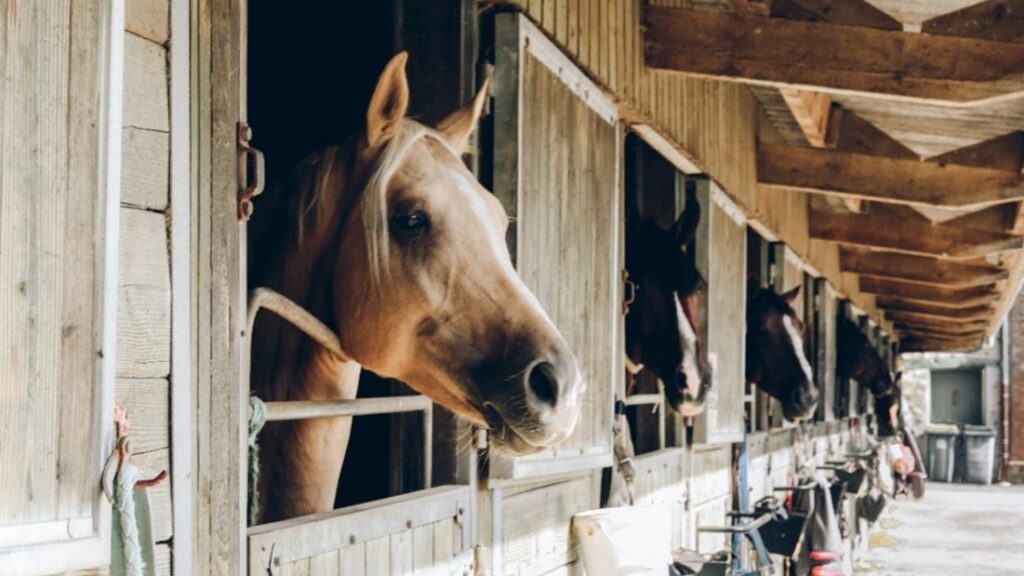
It’s essential to draw up a loan agreement before you start loaning a horse or loaning out your horse. This will detail how the horse is to be cared for and the share of responsibility, to help prevent any disputes. A contract will also help protect you from unforeseen circumstances, such as the owner suddenly choosing to take the horse back or the loanee returning the horse without warning.
Solicitor Hannah Bradley from law firm Brabners told us the main points a loan contract should cover:
- Names: The names of the horse, owner, and loanee,
- Livery: Details as to where and how the horse will be kept. Does the owner need to be notified should the horse move? Who will bear the cost of transporting the horse at the beginning and end of the loan?
- Costs: How much are the loan fees? Who will meet the horse’s day-to-day expenses? Does this include veterinary and farriery costs?
- Loan period: When will the loan start? What is to be the length of the loan? Will it be a fixed term (such as one year), periodic (continuing each month until further notice), or for a specific purpose (e.g., until the horse has bred a foal)? Do you wish to have a probationary period so that it can be established that both the horse and the loanee are suited?
- Use: What will the horse be used for? Can the horse be used for competitions? Are there any disciplines the horse shouldn’t be used for?
- Veterinary care: Who will have the authority to decide on the horse’s veterinary treatment? What if the horse becomes suddenly ill or injured and the vet advises that it should be put to sleep? Does the loanee have the authority to make that decision if they cannot contact the owner?
- Insurance: Will the horse be insured? If so, who will pay? Ensure that the loaner is able to comply with the terms of any insurance policy.
- Other riders: Is anybody other than the loanee permitted to ride or use the horse?
- Breeding: Is the loanee permitted to breed from the horse? If the horse has a foal, will it belong to the borrower or the owner?
- Notice period: How will either party end the loan? What notice period must be given? In what circumstances can a party terminate the loan without notice?
- Buying (for loan-to-buy agreements): Will the loanee have the option to buy the horse after a predetermined period? Has the price already been discussed?
Any extra protection you will require will vary depending on if you are the owner or the loaner. And you may wish to add other points to the loan contract, which we will detail further down. Terms to be discussed will also depend on the horse itself and what it is intended to be used for.
It is always best to have the agreed terms documented so that if things take a turn for the worst, you have an accurate record of what was agreed at the time. It’s important that your contract is tailored to your individual loan, so it’s a good idea to speak to a professional to get your contract written up and ensure both parties are happy. If this is not possible, then you can agree to something on paper yourselves. You can find many horse loan agreement templates online which can act as a great starting point for drawing up your contract. This will ensure all agreements are documented and you’re not relying on conversations which you will have no proof of at a later date.
Loanee: Loaning a horse
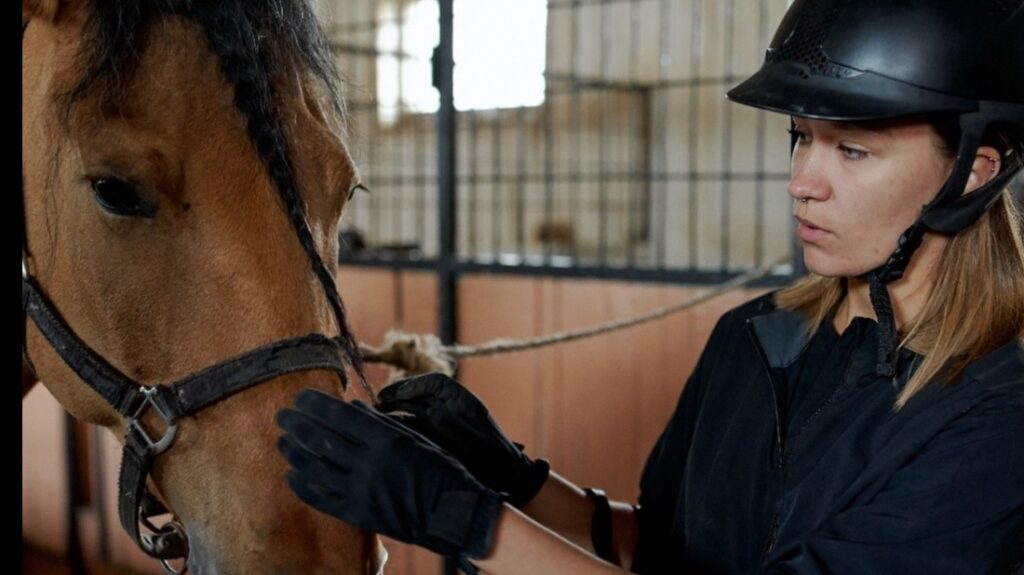
If you’re thinking of loaning a horse, it’s a good idea to familiarise yourself with the responsibilities involved. While it is less of a commitment than buying a horse, you’ll still be caring for a living being, so you’ll need to think carefully and ensure you’re serious and prepared before you look for a loan horse or pony.
Cost of loaning a horse
The average cost of loaning a horse can vary greatly depending on the type of agreement, the size, health, and skill of the horse, and the responsibilities involved. It is unique for each individual agreement, so be sure to read your contract thoroughly to make sure you’re happy with the costs involved. It’s a good idea to draw up a budget to decide how much you’d be willing to pay and if the costs are affordable in the long term.
If you’re part loaning a horse, your costs may depend on the number of days you’re responsible for the animal (sometimes called pay per ride). You might also be required to split the cost of vet bills and other care costs. Expect to pay a little more for a particularly skilled horse, or for an agreement that doesn’t require you to do yard work.
For a full-time loan agreement, you’ll usually pay a monthly fee, plus any extra care costs such as vet bills, farrier costs, and day-to-day livery, bedding, and food costs, which could be anywhere from £3,000 to £10,000 per year[i]. Most owners will provide basic tack with their loan horse, but you may choose to pay for extra tack or rugs yourself.
Time commitment of a horse loan
Loaning a horse involves all or part of the responsibilities of owning one, so it’s a good idea to consider the amount of time you’re able to commit to the horse. This includes the times of day you’re able to visit. If you’ll find it difficult to tend to your horse regularly, a part loan may be a better option, as you can coordinate with the owner or other loanees to ensure the horse gets plenty of love and attention every day.
How to find a loan horse
You’ll be able to find horses to loan on most equestrian classifieds sites. You can then filter by cost and location to find a horse that will be the right fit for you. You can also ask around at any local stables and riding schools as instructors or horse owners may know of someone looking to loan their horse out.
Loaning from a riding school
Loaning a horse from a riding school is also an option, although the arrangement can be a little more complicated than private loan agreements. In most cases, you’ll pay to partly or fully loan the horse but will need to be aware that the horse will be needed for riding lessons on certain days.
While you may not get full use or flexibility as you would with a private loan, loaning horses from a riding school can be a good stepping stone for less experienced riders. This is because there will always be someone around to help out. So, if you spot an injury or just have a question, there will usually be someone at the riding school to guide you. With a private loan agreement, whether it’s a part loan or full loan, you will need enough experience to be confident caring for the horse alone.
What to look for in a loan horse
Just like when you buy a horse, you’ll want to look around to find the right loan horse for you. Make a list of all the aspects your perfect loan horse might have based on your riding level and height, including horse temperament, skill, and size. Below are some of the aspects you may want to think about when searching for a horse to loan:
Breed: A horse’s breed can influence a lot of factors such as skill level, health, and temperament, so it’s a good idea to do your research and consider what kind of breed you’re looking for. Some horse breeds may also perform better at certain disciplines, for example, thoroughbreds are built for speed, making them great endurance horses, racers, and sports horses. Smaller horses like Shetland ponies or Welsh mountain ponies make fantastic ponies for young riders. Our guide to UK horse breeds can tell you more about different breeds, their characteristics, and their uses.
Size: You’ll want to make sure that the horse is the right height and weight for you. Remember that a horse can usually carry around 15–20% of its own body weight. This includes both the rider and the tack, so this is something to bear in mind. If you loan a horse that is too big or small, you may also have trouble balancing while riding, and you may struggle to control them effectively. Our horse and rider size guide will be able to help you find the right size horse for you.
Skill level: If you’re a relatively new rider ready to learn the ropes, you may want to search for an older horse that doesn’t need as much training. Anywhere above the age of eight years old is usually old enough. If you’ve got more experience and you want to try your hand at some training, you may want to look for a younger horse that you can help train up. However, you will need to make sure that both you and the owner are on the same page with their training.
Temperament: Some horses are better suited to more experienced riders due to their temperament — if they’re prone to be stubborn or spooky, for example. In most cases, the horse’s owner will be very familiar with the horse’s personality so will know what kind of rider would suit them best. You’ll usually find this in the description on the listing.
Owner: You’ll also want to look around for the perfect owner, so you can find someone you’ll be happy sharing the horse with, whether you’re opting for a full or part loan. Finding your dream horse and owner combination may take some time, but doing your research can help the process be as simple and stress-free as possible, so everyone including the horse is happy.
If you find a horse that you’re interested in, make sure to visit it with an experienced horseperson and take it for a ride to ensure they are the right horse for you before you sign any contracts. It’s often difficult to decide if a horse is suitable based on one viewing, so try to agree on a trial period if possible, so you can get a better feel for the animal longer-term.
Taking out insurance
Before loaning a horse, it’s vital that you take out public liability insurance. You’ll be responsible for the horse during your loan period, which means you’ll also be accountable for any damage your loan horse causes to a third party’s person and/or property. Public liability insurance can protect you if anything does happen. Be sure to read our horse insurance guide for more information.
Signing the contract as the loanee
A horse loan contract is a legally binding document so it’s a good idea to read over the details thoroughly before signing it, to make sure you’re happy with the terms of your loan. Alongside the main agreement terms mentioned above, you may also want to:
- Be clear with the owner about your own requirements and abilities.
- Consider having the horse vetted. This will act as an accurate record of the horse’s physical condition at the start of the loan and could uncover any issues which may appear at a later date.
- Ensure that arrangements are made for you to take control of the horse’s passport and registration papers.
Owner: Loaning out your horse

If you can no longer commit to full-time care but aren’t yet ready to part with your horse, or if your circumstances are only temporary, then loaning out your horse can be a great solution. Your horse will get plenty of love and attention, and you can still be involved in their care as much or as little as you like. However, as mentioned, loaning out your horse is a major decision, so you’ll need to consider it carefully to make sure it’s the best option for both you and your horse.
Deciding if loaning is right for your horse
Your horse’s welfare will no doubt be the most important consideration when you think about loaning them out. It’s crucial that you feel confident that your horse will be happy and healthy while on loan. Of course, this means finding a loanee that you can trust, but you’ll also need to think about how well your horse will adjust to the change. Are they good with other people? If they need to be relocated, how well will they settle into their new home? Do they get along with other horses, or will they need to go somewhere they can be kept separate? If they need any special considerations, this doesn’t mean they can’t be loaned out, but it may mean you need to be particular with the kind of home they go to.
You should also only consider loaning your horse if they are healthy and the loanee can ride them without any significant health issues. Be aware that potential loanees might ask for the horse to be vetted, so you may want to get your horse vetted in the initial stages for peace of mind.
Finding someone to loan your horse
When it comes to finding the right person to loan your horse to, it pays to be cautious. Your horse will be under their day-to-day care, so it’s worth taking your time to find the right rider and get to know them. To put your mind at ease, you may want to request references for any prospective loanees, whether that’s from previous owners, a riding school, or the owner of a horse they have helped care for.
Always check the name and address of potential loaners and, if possible, visit them at home to make sure they are who they say they are. If your horse will be available for a full loan and needs to be moved to a new home closer to the loanee, it’s a good idea to pay a visit to the new yard so you can determine if it will be the right fit for your horse. Ask to take a good look around and be sure to find out more about security, pasture management, and stabling, so you can get an idea of whether your horse would settle in nicely and whether you will feel confident that they are safe and happy when you’re not there.
Signing the contract as the owner
It’s important that you’re 100% happy with the terms and conditions of the loan before signing the agreement. This will put your mind at ease and ensure your horse is getting the very best care possible, according to your instruction. Along with the main agreement terms mentioned earlier, you may also want to:
- Ensure that the loanee knows that overall control (and ownership) of the horse remains yours.
- Agree that you have a right to inspect the horse (usually at an agreed mutually convenient time).
- Take care to disclose any quirks, habits, or vices of the horse. If the horse injures or causes loss to the loanee, you will be in a much stronger position should they seek to make a claim against you if you have disclosed a potential cause of any accident beforehand.
- Make sure that it is clear what the horse is to be used for. What is it suitable to be used for? If you would not be happy with your elderly horse being put through strenuous exercise, say so.
- Ensure that the horse and any equipment to be loaned with it are adequately described. What is the condition of the equipment?
- Include details of the horse’s passport, breed society, markings, freeze brands, or other identifying marks.
- Disclose whether the horse will require any special care.
- Set out any requirements, which the loanee must adhere to. Does he/she require feed supplements or remedial shoeing? Do you wish for the loaner to use the same vet/farrier?
- Outline how often the horse must be shod and wormed.
- Ask for proof of insurance. You may also want to discuss whether you would like additional cover for things like vet fees.
Informing the PIO
The law states that a horse must have a passport and microchip. This became a legal requirement in the UK in 2009 and makes it easier for owners to track their horses in the event they go missing. When your horse goes out on loan, you should inform the Passport Issuing Organisation.
The horse’s passport should stay with the horse wherever it goes, so it’s important that the loanee is provided with the passport if the horse needs to move yards. You should also keep a copy of the passport with you.
Maintaining contact throughout the loan
Once you’ve signed the horse loan contract and the loan period is in full swing, it’s a good idea to keep regular contact with the loanee and organise frequent visits. This will ensure you can keep an eye on how your horse is doing and lets the loanee know you’re always around should they need anything. If your horse has been transferred to a new stable, it’s a good idea to get the yard manager’s contact details too, in case anything happens when you or the borrower are not around.
What happens if there is a breach of agreement?
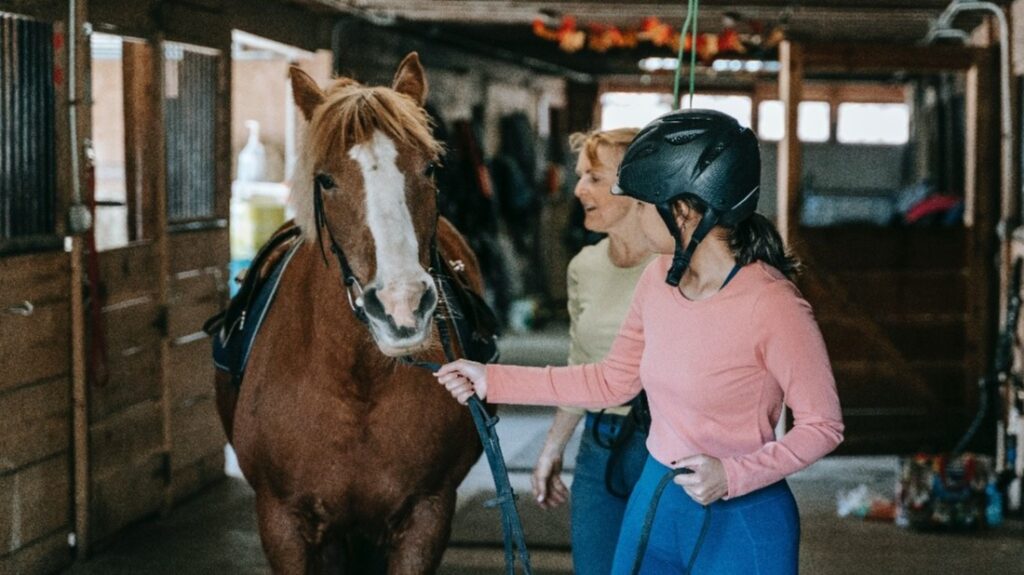
Loaning horses can be a rewarding and financially viable experience for both horse owners and prospective loanees. Unfortunately, the nature of the relationship created between the parties often gives rise to disputes. Even when parties take all the necessary precautions to prevent a dispute, they do arise from time to time. To help owners and borrowers rectify disagreements smoothly, Solicitor Hannah Bradley also gave us her advice for if there is a breach of contract.
“It is always preferable to resolve disputes between the parties,” Hannah says, “but this is, unfortunately, not always possible.
“The cost of any intended legal action must be considered and assessed against the potential gain. Unless the damages which you are seeking to recover (usually the value of the horse) are greater than £10,000, even if you are successful in court, it is unlikely that the other party will be ordered to pay your legal costs.
“The court encourages the use of alternative methods of dispute resolution such as mediation: a process involving an impartial, trained legal professional who will assist the parties to reach a resolution.
“It is important that parties to intended litigation are aware of the strength of their position. The journey through the court process can be lengthy, stressful, and expensive, but in some cases, it may be the only option for an aggrieved individual wishing to assert their legal rights.”
If you find yourself involved in a dispute as a result of a loan agreement then you should seek independent advice from a solicitor, or the Citizen’s Advice Bureau.
A horse loan can be a great solution for both the owner and the borrower but it’s important not to rush into the decision. Each aspect should be considered carefully to decide whether loaning a horse is right for you.
For even more tips and advice, be sure to take a look at our equestrian news and guides where you’ll find a variety of horse care resources for all kinds of riders. If you’re looking for help with training or you’re searching for equestrian-themed entertainment, you’ll find it all here at Horse & Country. Subscribe today and you’ll get access to thousands of hours of live events, training and advice, and Horse & Country originals all in one place.







